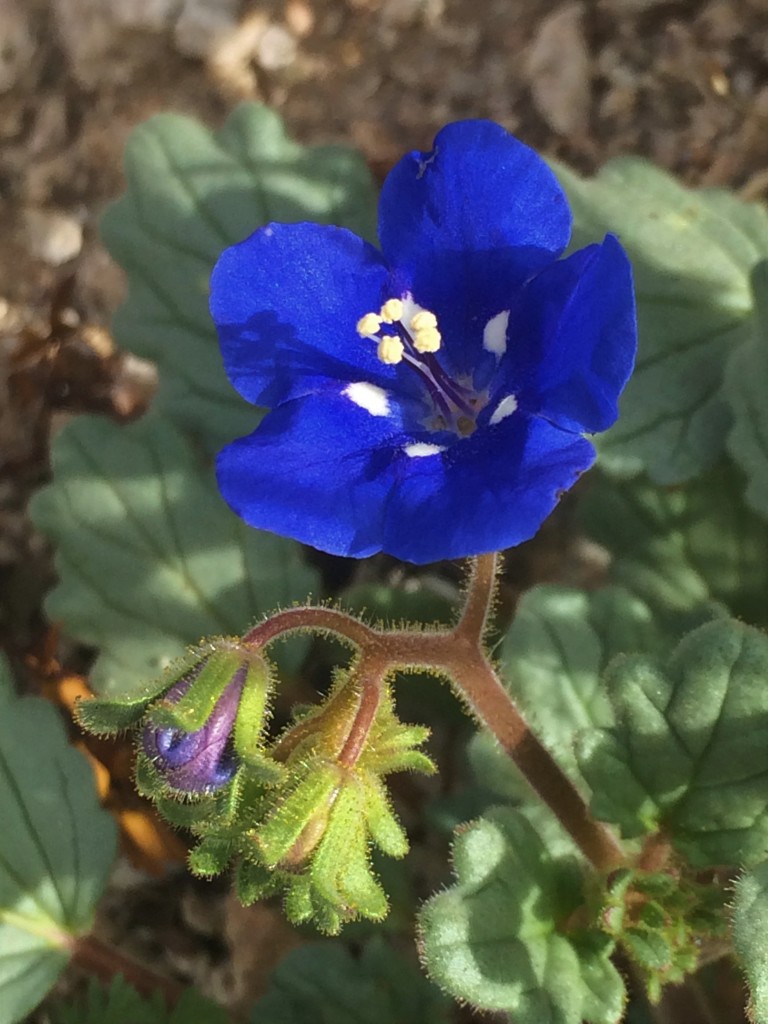I’d now like to properly introduce everyone to the phacelias! This time, I definitely won’t need to cheat by using a whole family–with around 175 described species, almost 100 of which occur in the state, and 34 of which I’ve photograph there are plenty to choose from. Phacelias (that’s both the scientific and the common name) are in the borage family (Boraginaceae). This family has flower parts in fives, which, being fairly common across dicots, isn’t that useful for identification. The easiest way to know you’re looking at a borage is to see that flowers are arranged in a one-sided cyme. Basically, the next flower along the flowering stalk forms from the lateral bud of the previous flower. The result looks like the curled tail of a scorpion. Here’s a side view of Phacelia minor to showing a scorpioid cyme:

This southern California chaparral species has some of the biggest flowers in the genus, I have no idea why it’s called minor! Telling Phacelia from the other genera in Boraginaceae is a bit trickier, but flower color can help. Many phacelias have blue, purple, or pink flowers, whereas other common borage genera tend to have white or orange flowers. But color certainly isn’t a hard and fast rule. For example, here’s an adorable little white-flowered species, Phacelia neglecta, found in alkaline soils throughout the southwest US.
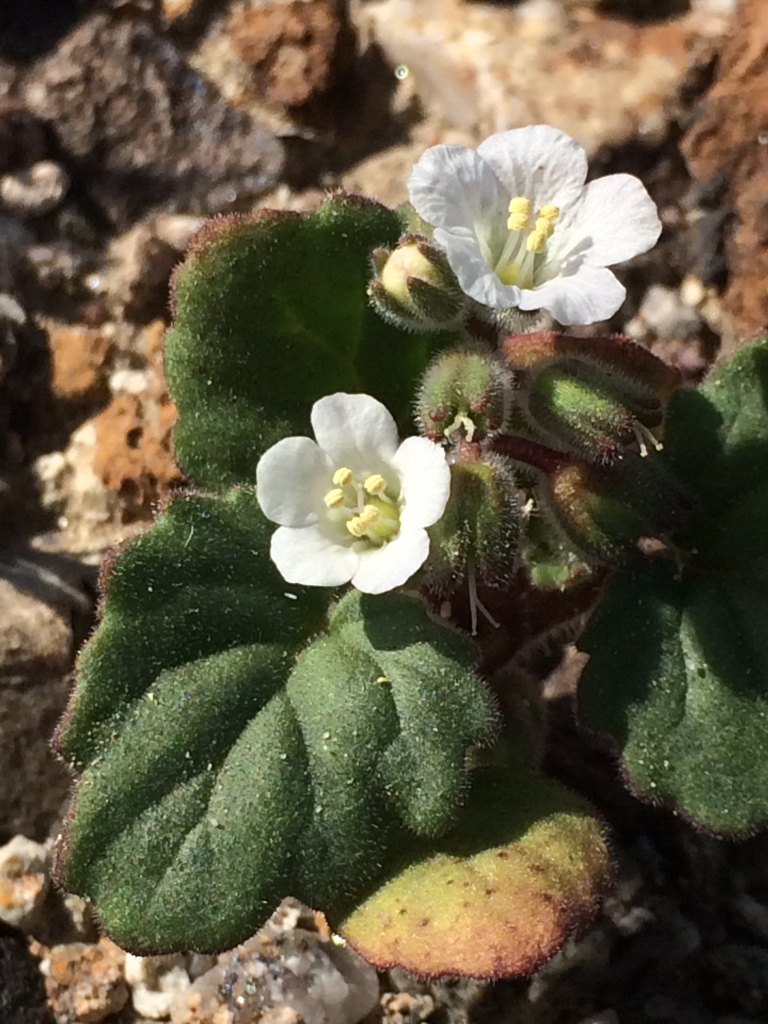
This genus really runs the gamut in size, from beefy perennials, such as Phacelia california, a Bay Area native,

To the tiniest of annuals, such as this rare Phacelia leonis from serpentine soils high in the Klamath Ranges.
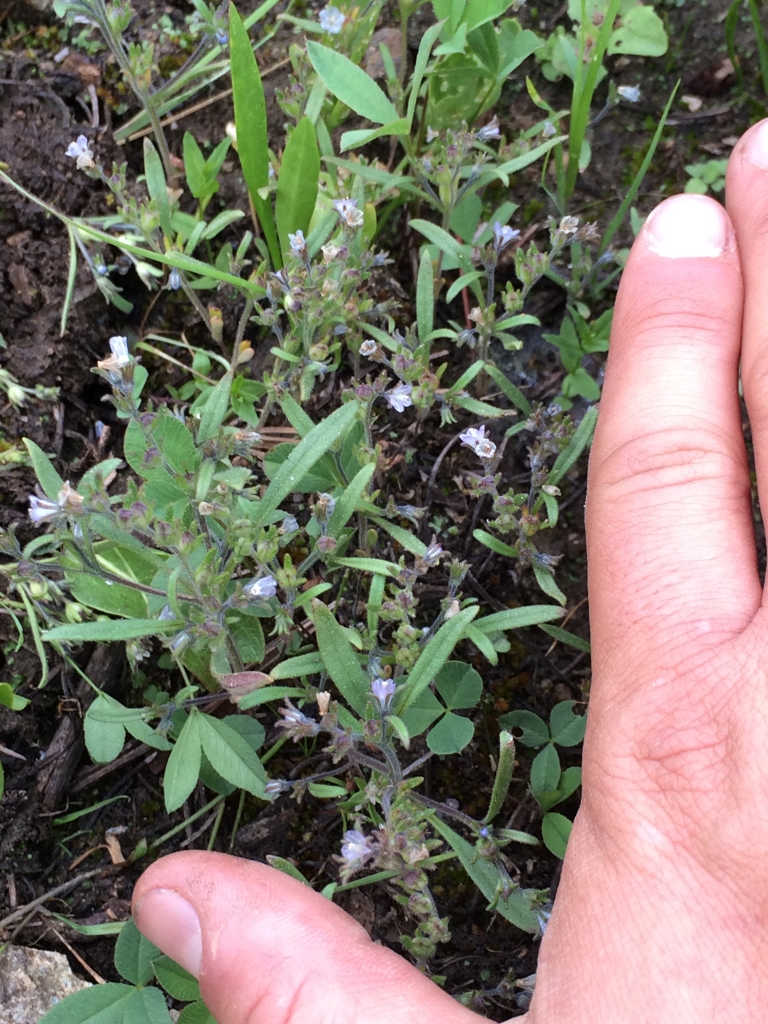
With exceptions such as that last one, most species of phacelia are fairly showy and can bloom in large numbers along trails or other accessable open areas. They really seem like tempting targets for identification by amateur botanists. However, fair warning, keying out Phacelia is definitely not for the faint of heart. Many species are extremely similar, and can integrate where species ranges overlap producing plants with intermediate traits. You need both flowers and fruits to work the key, and a hand lens and millimeter ruler in order to see things like furrows on the seeds or to measure bits like the style. Even seemingly straightforward questions, such as “are the leaves compound?” become minefields of uncertainty. Making it all worse, many species have stiff, sharp hairs that cause handling the plant to be a painful experience. Phacelia brachiloba is an example of a common species that takes quite an effort to identify, despite its showy display.

So why bother? Well, identifying your local Phecelia can be extremely rewarding, because there’s a chance the plant you’re looking at is quite range restricted. Especially in Southern California, it seems like every little mountain range has its own species. Thirty-two taxa are listed as rare by the California Native Plant Society. Additionally few California taxa are new to science within the last 20 or so years, so with this group, it’s possible you’re looking at an unsubscribed species! Plus, many of them are quite beautiful, so you’ll probably want to photograph them and post about it. And there’s nothing more embarrassing than misidentifying a plant in a post, am I right?…. No….I’m the only one that feels that way? Huh. Well anyway, I’ve saved my 5 favorite phacelia photos until now. In no particular order,
Phacelia longipes, a large-flowered species from gravelly slopes in the Transverse Ranges
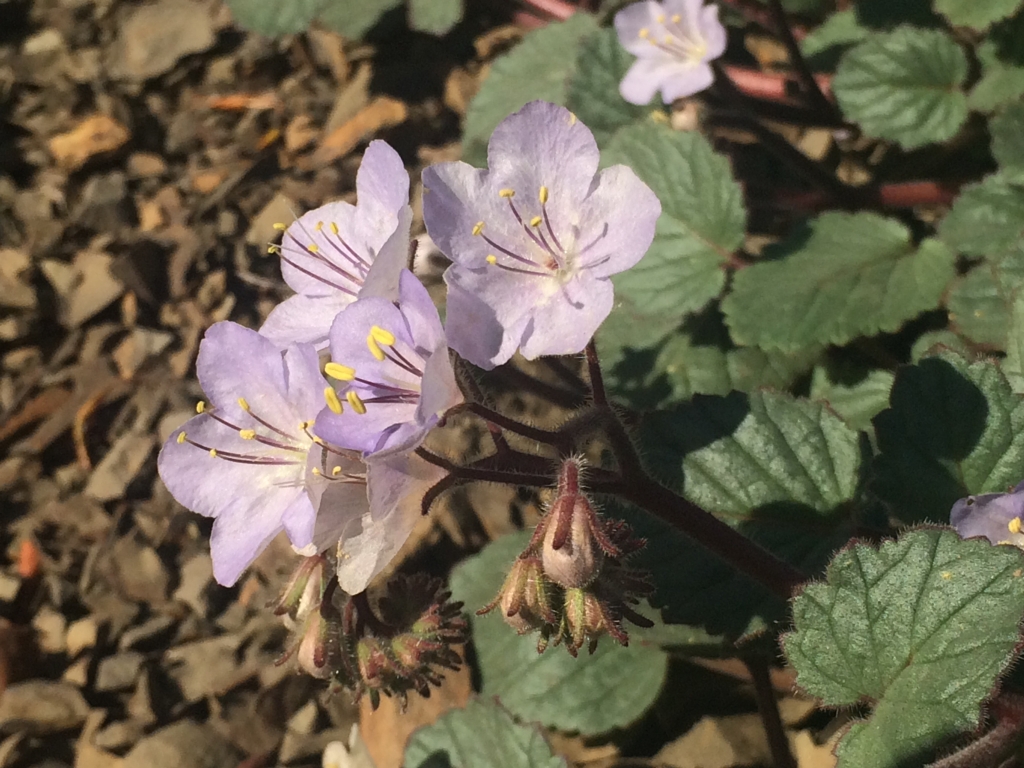
Phacelia pedicellata, my favorite of the widely-distributed desert species, has the great common name of Spider Phacelia
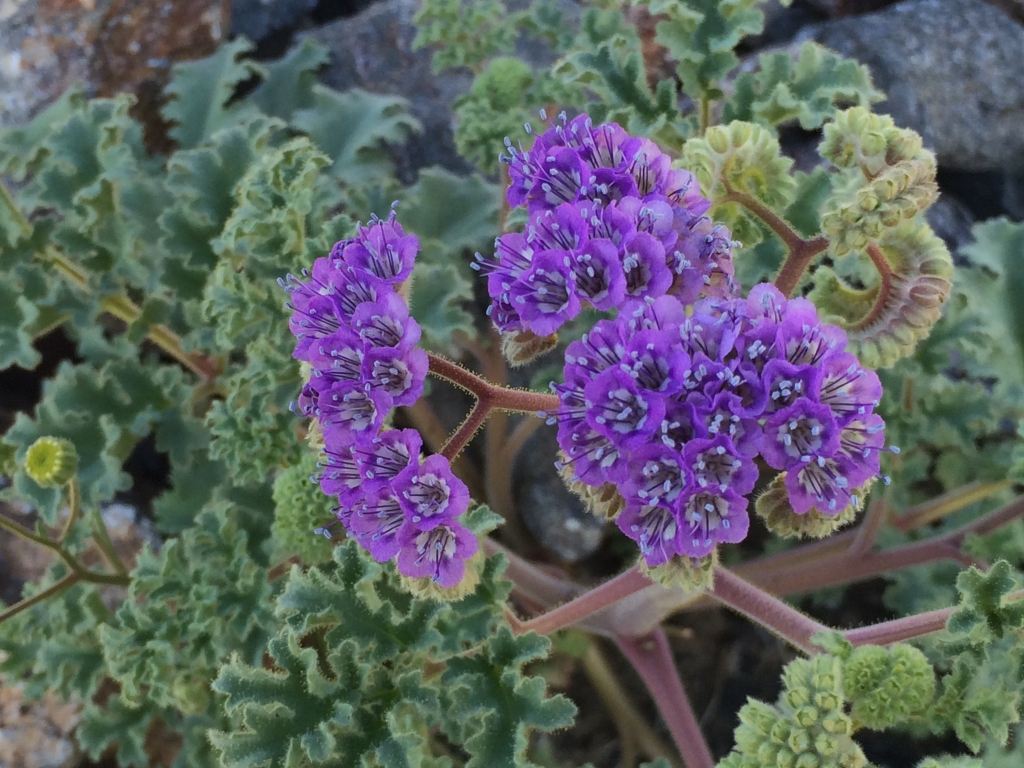
Phacelia mohavensis, the second really poorly named species of this post. It doesn’t occur in the Mojave (although it does inhabit nearby mountains)! I love the transparent windows in the petals of this one.
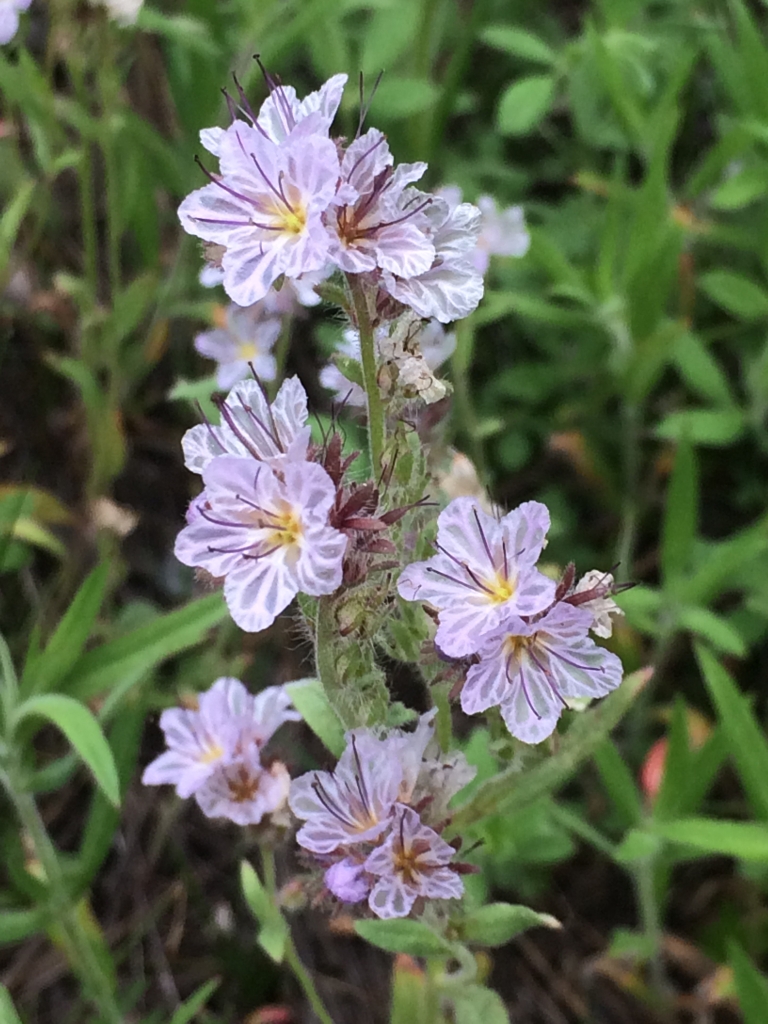
Phacelia sericea. This photo’s actually from Colorado (although the species does occur in far Northeastern CA). It was loved by the bumble bees I was studying while out there.

And finally the rare Phacelia nashiana, found only in decomposing granitic soils in the transition zone between the Southern Sierras and the desert. The flowers of this beauty make you question whether you’ve even seen blue before.
